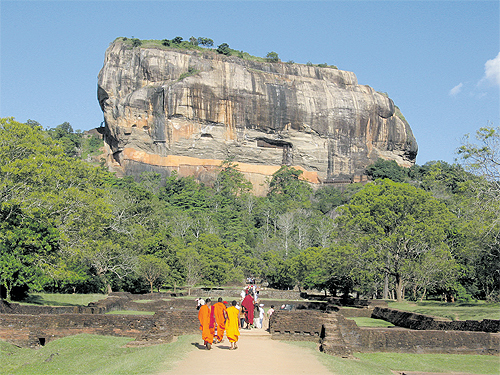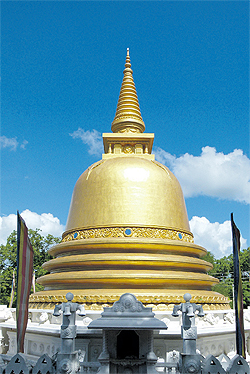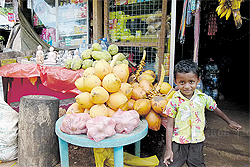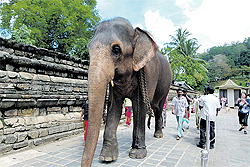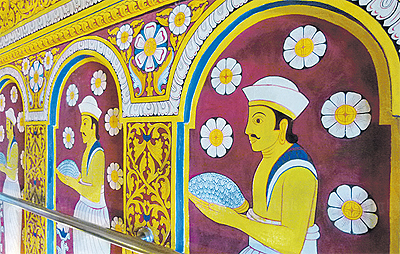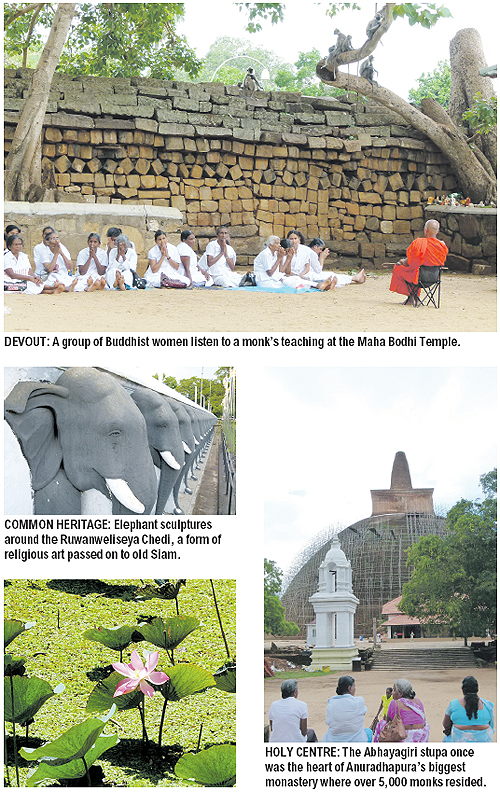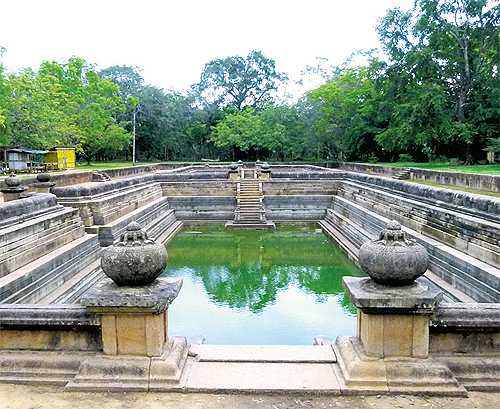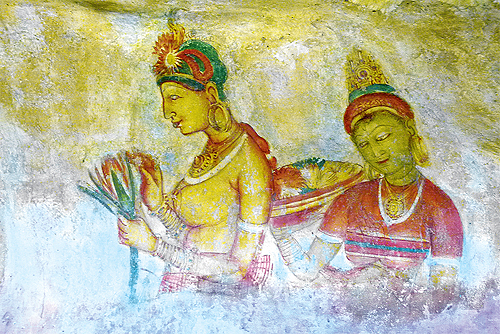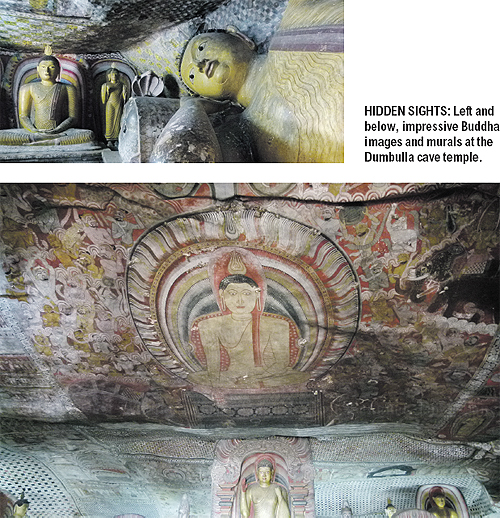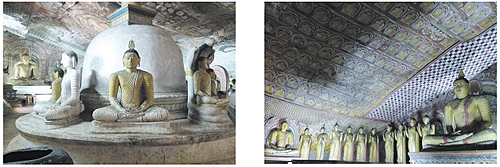Back to buddhism's basics in sri lanka
After years of domestic strife, the country is now safe to visit and its sacred sites offer Thai Buddhists an unparalleled opportunity to experience their faith in a country where devotion remains largely unaffected by modernity's march
'Ayu Bowan! May you live a long life!" When you hear this greeting, which is often accompanied by a gesture similar to a Thai wai, you know you are in Sri Lanka, a lush green tropical island with an ancient culture.
After more than 20 years of the Tamil Tigers' insurgency, the civil war that had afflicted Sri Lanka with violence and turmoil finally came to an end in 2009, and the country's new-found peace allows it to welcome visitors back once again.
And the new calm offers locals from both sides of the conflict a chance to live the normal and safe lives they have long deserved.
Visitors from around the world are also streaming back to the picturesque "Pearl of the Indian Ocean" to marvel at its natural charms and cultural richness.
They include many Thai Buddhists who now consider Sri Lanka the must-go destination after India for religious pilgrimages. After recently returning from such a trip, I can understand why.
In India, visits to sacred sites bring joy to the devout from being where the Buddha once lived and taught, where you can pray and meditate and feel as if you were back in ancient times, in the presence of the Buddha and his disciples. The joy is perhaps also heightened by the relatively more difficult journey to travel between sites far from one another.
But the sacred sites in India are mere remnants of a long-lost past surrounded by a different value system _ and also by much poverty that often fills the more affluent visitors with guilt.
Sri Lanka offers a different feel.
Everywhere we go, we were greeted by the island's lush green natural abundance, the ever-smiling people and the easy-going atmosphere. The ancient religious sites are also teeming with the faithful who fill them with an air of sanctity with their white clothing and the hum of prayers.
In India, the ruins of the ancient monuments are for tourists. In predominantly Buddhist Thailand, it has become increasingly difficult to find peace and quiet in temples where people now mostly go to ask for divine help in exchange for donations.
It is extremely refreshing, therefore, to see the Buddhists in Sri Lanka still going to temples to pray and meditate as part of their daily lives.
Practising Buddhist Somnuek Khemacheva outlined the different experiences India and Sri Lanka offer the devout.
"In India, we visit the sacred sites to pay homage to the Buddha and to follow the journeys he took during his lifetime to reaffirm our faith," Ms Somnuek said.
"In Sri Lanka, we're here to witness the power of faith, to admire people's deep sincerity toward Buddhism, and to reflect on what we Thai Buddhists have lost in our pursuit of material comfort and convenience, that we equate with happiness."
At the Temple of the Sacred Tooth Relic in Kandy, we were overwhelmed by the hymns of prayer from the devout as they waited patiently from early morning to pay homage to the holy relic. Such displays of devotion greeted us at every sacred site.
At the Maha Bodhi temple in the ancient town of Anuradhapura, people come from near and far to pay respect to the world's oldest flowering tree, grown from the original Bodhi tree under which the Buddha attained enlightenment more than 2,500 years ago. Now frail, hunched and needing support to withstand the elements, the sacred tree was brought to Sri Lanka by Theri Sangamitta, a Bhikkhuni and daughter of the Emperor Ashoka around 249BC.
Like the Maha Bodhi temple, other religious monuments in Anuradhapura still draw grandparents, couples young and old, and mothers and fathers with small children in tow. Going to a temple is still a family outing in Sri Lanka. And to see teenagers going to temples in groups, some seriously praying and meditating in the shade of trees, is really heartening.
For Thai Buddhists, Sri Lanka offers a special joy, like meeting up with an old friend who played an important part in shaping who they are today.
Theravada Buddhism in Thailand, after all, came from Sri Lanka. Dating back more than 700 years, Theravada Buddhism from Sri Lanka reached Sukhothai in the 13th century and had a significant influence on both religious traditions and architecture, from the days of old Siam to modern times.
''It's like going back to see our roots,'' added Ms Somnuek, while marvelling at a Sri Lankan bell-shaped stupa, a design that Thailand has adopted as its own.
The sense of familiarity does not stop there. Similarities between both countries' alphabets suggest both Sri Lankan and Thai characters come from the same ancient roots. It is the same with Sri Lankan curry, which is marked by the use of coconut milk and much less dried spices than in Indian food.
Even for those who do not share these cultural and religious ties, the island is a cultural wonder with seven Unesco World Heritage sites. The ancient capital Anuradhapura, for example, attests to Sri Lanka's rich cultural heritage and gives visitors a glimpse of Buddhism at its height, shortly after the Buddha's passing.
The island kingdom's capital for more than 1,000 years and the centre of Buddhist scholarship and the arts, Anuradhapura is home to so many Buddhist monuments that it would take days to explore them. Among the most notable: The Ruwanweliseya Chedi, an architectural marvel that is within walking distance of the holy tree; the 122m Jetavanaramaya Stupa, the city's biggest stupa and in ancient times the world's third highest structure _ in scale, it is only behind the pyramids of Egypt; and the 113m Abhayagiri stupa, which once was the heart of the city's biggest monastery and served as an international centre for Buddhist scholarship and arts for 5,000 monks.
The Thuparama Dagoba, meanwhile, is much smaller in scale but it is the oldest, being the first stupa built on the island around 300 years after the Buddha's time. It is also one of the holiest sites because it is where the Buddha's right clavicle was enshrined.
About three hours' drive from the ancient capital is Sigiriya (the Lion Rock), a gigantic rock fortress with palace ruins. While Sigiriya is famous for its 1,500-year-old fresco of court ladies on a cliff, it also attests to Sri Lanka's mastery in water management, architecture and fine arts in ancient times.
Half an hour drive's away is the Dumbulla cave temple with breathtaking murals and Buddha statues to remind us of the teachings of impermanence and non-attachment. It has been a sacred pilgrimage site for more than 2,000 years.
But no pilgrimage would be complete without a visit to the Temple of the Sacred Tooth Relic in Kandy. It is a long drive from the Dumbulla cave complex, but travelling from one site to another in Sri Lanka is a joy. The road may be long and narrow, but it is smooth, peaceful and traffic free. Best of all, it offers a picturesque vista that shows off Sri Lanka's diverse natural beauty, from the turquoise blue sea to green valleys and scenic mountains.
While past political violence stalled development and raised questions over the roles of religions and ethnicity, for outsiders the relatively slow economic growth over the past 20 years makes a trip to Sri Lanka a journey back in time to a more relaxed, slower paced life where one still has time to stop and smell the roses.
It is a place to witness a rich, ancient culture and the power of faith. For Thai Buddhists, it is a place to cherish cultural ties and to realise that while faith helps make us feel full and secure within, the key to lasting peace is to follow the Buddhist teaching on non-attachment in order to transcend one's faith, race and ethnicity.
In the past, Sri Lanka gave old Siam our Buddhist culture. When present-day Thailand is fraught with ethnic violence in the restive South, the island can still teach us valuable lessons on the key to peace. I returned from Sri Lanka full of thankfulness.
